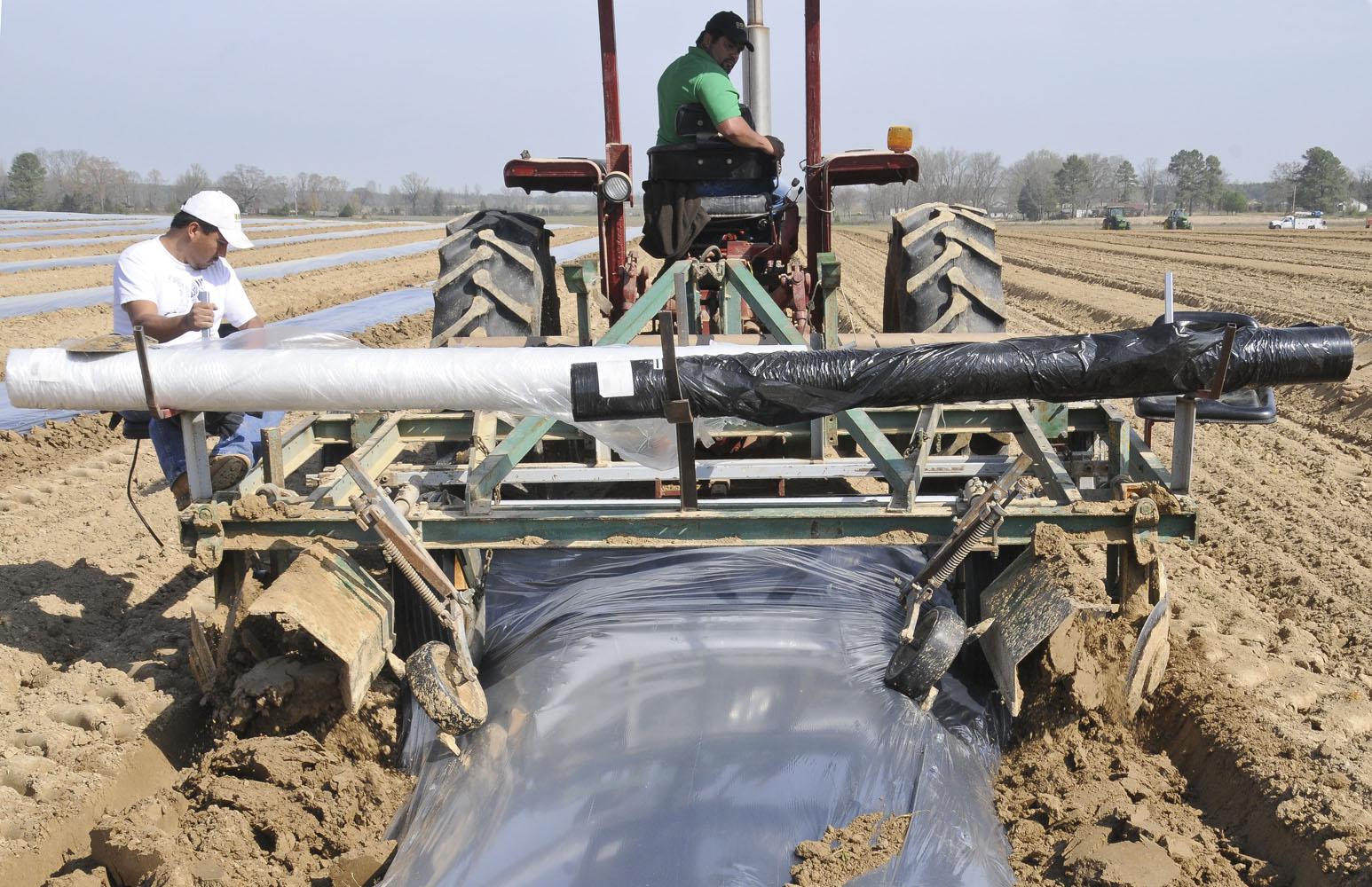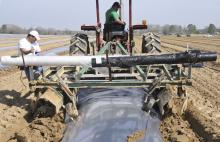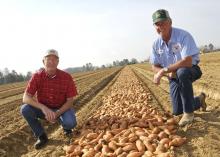Information Possibly Outdated
The information presented on this page was originally released on April 7, 2011. It may not be outdated, but please search our site for more current information. If you plan to quote or reference this information in a publication, please check with the Extension specialist or author before proceeding.
Two crops needed to harvest sweet potatoes
MISSISSIPPI STATE – Farmers have to grow two crops just to make one sweet potato harvest, making this delectable vegetable a labor-intensive, high-cost crop to produce.
As of late March, Mississippi sweet potato producers had finished bedding the crop, which means they had planted the seed stock that will produce transplants, or slips. These slips will be planted in May and June to produce the sweet potatoes that end up on tables.
Bill Burdine, area sweet potato specialist in Chickasaw County with the Mississippi State University Extension Service, said the state’s sweet potato acreage in 2011 should be nearly 21,000 acres. This is up slightly from last year.
The number of commercial growers is about 105, an increase of six or seven from 2010.
“More people got into this business because of the profits that were made in 2010,” Burdine said. “This is not something to get into lightly because the equipment is so specialized, and much of it can only be used for sweet potato production.”
Most Mississippi sweet potatoes are grown in Calhoun, Chickasaw, Pontotoc, Webster, Grenada and Yalobusha counties. Burdine said one grower is in Tate County and another is in Humphreys County.
Sweet potato production is centered near the Vardaman/Houston area, which has Faulkner and Adaton silt loams. These soils are ideal for sweet potato production, as they provide drainage and allow roots to expand uniformly.
“The silt loam gives the potato a high quality shape and great taste,” Burdine said. “Sweet potatoes grown in this soil seem better tasting than those grown in North Carolina or most of Louisiana.”
Benny Graves, executive director of the Mississippi Sweet Potato Council in Vardaman, said this year was the earliest commercial producers have ever bedded the crop. Dry weather allowed them to start this process the last week of February.
“We have machinery that conveys the potatoes from hoppers and lays them out in a 3-foot wide stream of potatoes coming out of the machine,” Graves said.
The potatoes lay in a single layer on prepared soil that is fertilized and moist. A second machine comes behind and throws 1 to 2 inches of soil on top of the potatoes. Beds are then covered tightly with black plastic with a few holes punched to allow the potatoes to breathe.
“This creates long, narrow beds that may be up to a quarter of a mile long,” Graves said. “Rows are placed about 8 feet apart, allowing enough room to get the machinery through the fields.”
About 80 acres of seed beds are needed for every 1,000 acres a producer intends to plant.
“Then we wait and hope for sunshine and warm temperatures,” he said. “Sweet potatoes are tropical plants, and the black plastic helps keep the soil warm.”
The plastic sheets come off when the plants begin to emerge from the soil. In six weeks, the plants will be about 10 to 12 inches tall, which is when they are cut for transplants.
“A special cutter bar cuts them even with the soil line and lays them over,” Graves said.
Crews scoop up the slips by hand and stack them in plastic milk crates for ease of handling. Each crate holds about 1,000 plants; it takes between 11,000 and 13,000 slips to plant an acre of sweet potatoes.
“Growers typically hold these plants in milk crates 24 to 48 hours to let them initiate their own root system naturally,” Graves said. “Then they are taken to the field to transplant.”
Slips usually are cut beginning in early May, and fields are planted in transplants through June and sometimes into July.
To transplant, the hardy slips are placed on a mechanical planter. Most plant eight rows at a time with the help of two people per row. Workers feed a transplanting wheel one slip at a time, and the machine places one plant every 12 to 14 inches of row.
“There is a set of human fingerprints on every transplant put in the field,” Graves said.
Once planted the second time, the crop is given typical weed, pest and disease control management. It is ready to harvest between early September and October. Harvest, too, is labor-intensive. There are two ways sweet potatoes can be harvested, depending on soil conditions.
A two-row harvester can move through the fields, digging potatoes out of the ground and bringing them up a conveyer belt. Workers riding on the digger pull the potatoes off the vine and generally sort the potatoes into bins by size.
The second method uses a bucket crew. Harvesters go out with 40-pound buckets and gather by hand the potatoes that have already been turned out of the ground with a plow.
“There is a set of human fingerprints on every potato we harvest,” Graves said.
The crop’s labor demands add up to a high production cost. Sweet potatoes generally cost $2,000 to $2,500 an acre to produce. Depending on a number of factors such as weather and market conditions, growers can generate $2,500 to $4,000 an acre from their harvests under ideal circumstances.









